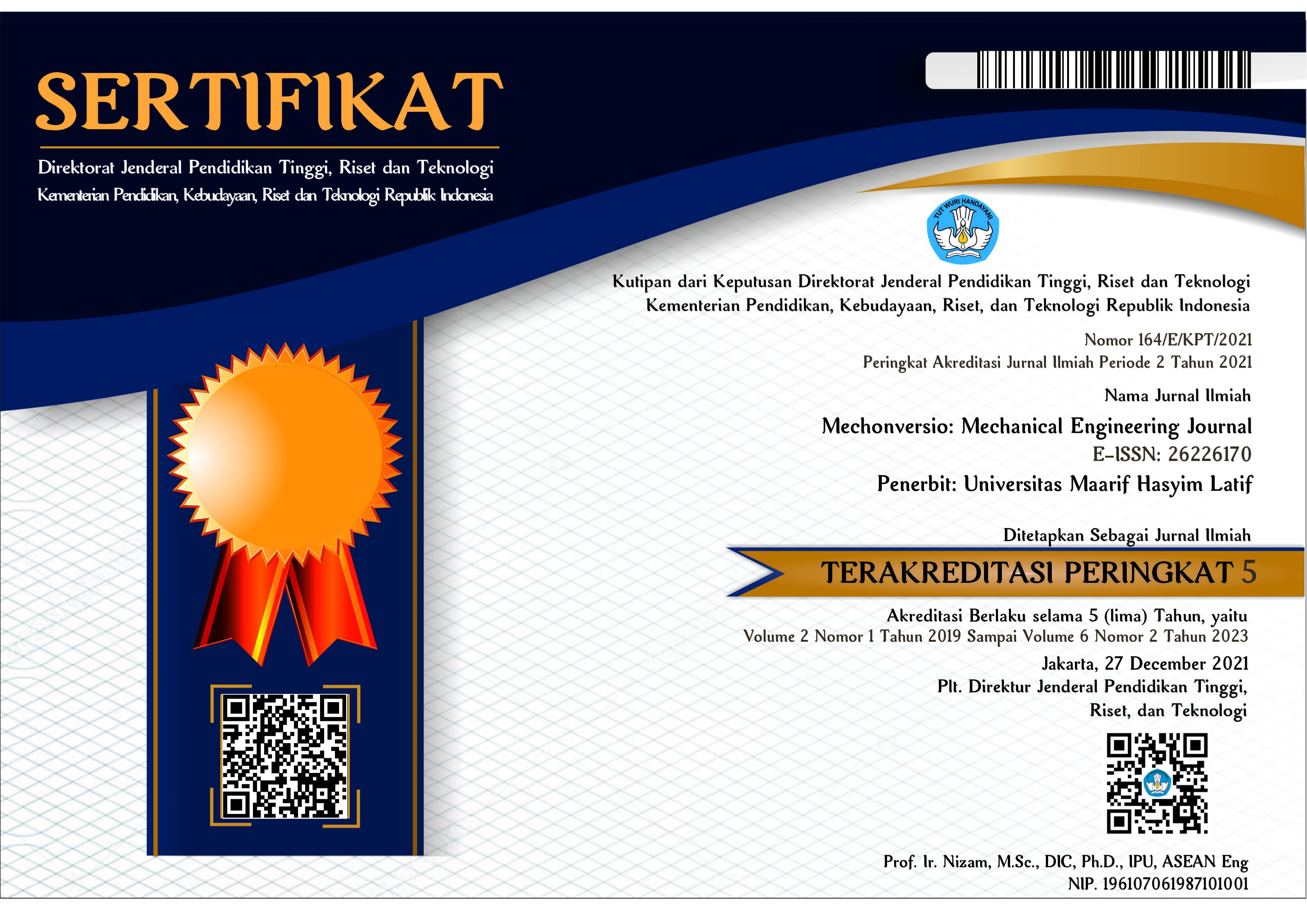KOMPRESI DATA SENSOR MENGGUNAKAN OPTIMALISASI PARAMETER DCT UNTUK SISTEM MONITORING IKLIM
DOI:
https://doi.org/10.51804/mmej.v6i1.14273Keywords:
DCT, monitoring iklim, Rasio penghematan data, Teknik kompresiAbstract
Teknik kompresi telah banyak digunakan dalam distribusi media digital untuk penghematan ruang penyimpanan. Terdapat dua jenis teknik kompresi, yaitu lossy dan lossless. Keuntungan dari kompresi lossy terletak pada penggunaan ruang penyimpanan yang lebih kecil dengan mempertahankan data yang penting. Kompresi lossy memiliki potensi untuk diimplementasikan kedalam suatu sistem dengan perangkat sensor yang banyak melalui eksplorasi teknik DCT. Kami juga melakukan percobaan untuk menentukan parameter DCT terbaik agar data yang direkonstruksi tidak jauh berbeda dari data asli dengan menjaga rasio penghematan data. Tujuan utamanya yaitu untuk mengurangi penambahan kapasitas penyimpanan di pusat data terkait dengan sistem pemantauan iklim. Kami menggunakan kumpulan data terbuka, yang terdiri dari enam sensor berbeda yang mewakili urutan data nyata berdasarkan pengukuran di lapangan. Hasil percobaan menunjukkan bahwa konsentrasi energi mempengaruhi kualitas data yang direkonstruksi. Rasio penghematan data terbaik diperoleh dengan menggunakan variasi ambang konsentrasi energi antara 0.9 hingga 0.99, tergantung pada jenis data sensor yang menghasilkan tingkat kesalahan di bawah 5%.References
Moon, A., Kim, J., Zhang, J., & Son, S. W. (2018). Evaluating fidelity of lossy compression on spatiotemporal data from an IoT enabled smart farm, Computers and Electronics in Agriculture, 154, 304–313.
Marrium, S., Masood, K., & Rashid, H. U (2021). Compression Techniques for Different Applications of Real-Time Communication, LGU R R.J.Computer Science IT, 2(1), 7-19.
Setyaningsih, E., Harjoko, A. (2017). Survey of Hybrid Image Compression Techniques. International Journal of Electrical and Computer Engineering, 7(4), 2206-2214.
Okasa, A. J., Ngantcha, J. P., Allogho, G., Joseph, A., Okassa, O., & Ele, P. (2020). Compression of Vibration Data by the Walsh-Hadamard Transform. Journal of Engineering and Applied Sciences, 15(10), 2256-2260.
Zhou, J., & Kwan, C. (2018). A Hybrid Approach for Wind Tunnel Data Compression. Data Compression Conference.
Sun, J., Yan, T., Sun, H., Lin, H., & Sun, G. (2021). Lossy Compression of Communication Traces Using Recurrent Neural Networks. IEEE Transactions on Parallel and Distributed Systems, 33(11), 3106-3116.
Marin, O., Schanen, M., & Fischer, P.F. (2018). Lossy Data Compression Effects on Wall-bounded Turbulence: Bounds on Data Reduction. Flow Turbulence and Combustion, 101, 365-387.
Hubbe, N., Wegener, A., Kunkel, J. M., Ling, Y., & Ludwig, T. (2013). Evaluating Lossy Compression on Climate Data. International Supercomputing Conference, 7905, 343-356
Liang, X., Zhao, K., Di, S., Li, S., Underwood, R., Gok, A. M., Tian, J., Deng, J., Calhoun, J. C., Tao, D., Chen, Z., & Cappello, F. (2022). SZ3: A Modular Framework for Composing Prediction-Based Error-Bounded Lossy Compressors. IEEE Transactions on Big Data, 9(2), 485-498.
Nakano, T., UoZomi, S., Johansson, R., Ohnishi, K. (2015). A Quantization Method for Haptic Data Lossy Compression. IEEE International Conference on Mechatronics, 126-131.
Naveenkumar, R., Jagadale, B.N., & Sandeepa, K.S. (2016). Performance Evolution of Image Compression in Walsh Wavelet transform using Wavelet Threshold. Interantional Conference on Electronics and communication systems, 3, 500-503.
Downloads
Published
Issue
Section
License
With the receipt of the article by MMEJ Editorial Board and the decision to be published, the copyright regarding the article will be transferred to MMEJ. The copyright transfer form can be downloaded here.
MMEJ has the right to multiply and distribute the article and every author is not allowed to publish the same article that was published in this journal.
MMEJ is licensed under a Creative Commons Attribution-ShareAlike 4.0 International License.
Under the following terms:
Attribution — You must give appropriate credit, provide a link to the license, and indicate if changes were made. You may do so in any reasonable manner, but not in any way that suggests the licensor endorses you or your use.
ShareAlike — If you remix, transform, or build upon the material, you must distribute your contributions under the same license as the original.




